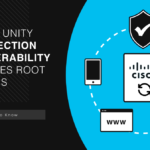Ivanti issued an alert about its Connect Secure VPN appliances. Advanced threat actors are exploiting two zero-day vulnerabilities in cyberattacks, possibly including state-sponsored groups. That is yet another vulnerability in Ivanti software.
Ivanti Connect Secure Zero-Day Exploited
Ivanti, a prominent software company, recently issued a critical alert concerning its Connect Secure VPN appliances. These devices are susceptible to zero-day vulnerabilities currently being exploited in sophisticated cyberattacks. Experts attribute these attacks to suspected Chinese state-backed hackers.
Ivanti has confirmed that the vulnerabilities in question allow attackers to gain unauthorized access and execute arbitrary code on affected devices. Considering the widespread use of Ivanti Connect Secure appliances in various business environments and providing secure remote access to corporate networks, it is of heightened concern.
Details of the ICS 0-Day Vulnerability
The exploited vulnerabilities are CVE-2023-46805 (CVSS 8.2) and CVE-2024-21887 (CVSS 9.1). The vulnerabilities can be fashioned into an exploit chain to take over susceptible instances over the Internet. These flaws may lead to severe consequences, including remote code execution (RCE) and unauthorized access to sensitive data. That, actually, explains the reason for 8+ score – the best things come in two.
The first vulnerability concerns authentication bypass in the web component, which allows remote attackers to access restricted resources without proper control checks. The second vulnerability is related to command injection in the web components, which allows authenticated administrators to execute arbitrary commands on the appliance by sending specially crafted requests.
Patches Not Yet Available
Although it has identified fewer than ten customers that have been affected, Ivanti has advised all of its customers to run the external Integrity Checker Tool (ICT) as a precautionary measure. The company has also added new functionality to the external ICT, which will be incorporated into the internal ICT. Customers should ensure they have both tools’ latest versions.
As for patch fixes, Ivanti plans to release patches for these vulnerabilities during the week of January 22. However, they will be rolled out in a staggered schedule according to the product version. In the meantime, the company has released a series of mitigation steps that customers should follow immediately to safeguard their systems. It is highly recommended that organizations follow these mitigation steps, as the situation is still evolving.
How to Protect against 0-day vulnerabilities?
Since a zero-day vulnerability is a vulnerability that attackers learned about before software developers did, there is no guaranteed solution. However, some measures significantly reduce the risks, and I will list them below:
- Use corporate-grade protection solutions like EDR/XDR. This innovative anti-malware software approach focuses on endpoint protection rather than individual devices. EDR and XDR solutions collect a vast amount of data about endpoint activity, including file operations, network traffic, and user behavior. It employs machine learning and AI to detect and respond to threats. By analyzing this data, they can identify anomalous patterns indicating a zero-day attack.
- Apply Zero Trust. Zero trust is a cybersecurity model that grants access on a least privilege basis and continuously verifies users and devices. As a result, this reduces the attack surface and makes it more difficult to exploit vulnerabilities.
- Perform regular pentesting. Penetration testing is a simulated real attack on an organization’s IT infrastructure to identify and assess vulnerabilities that attackers could exploit. So, this action can help organizations identify zero-day vulnerabilities that other security tools may not detect.




